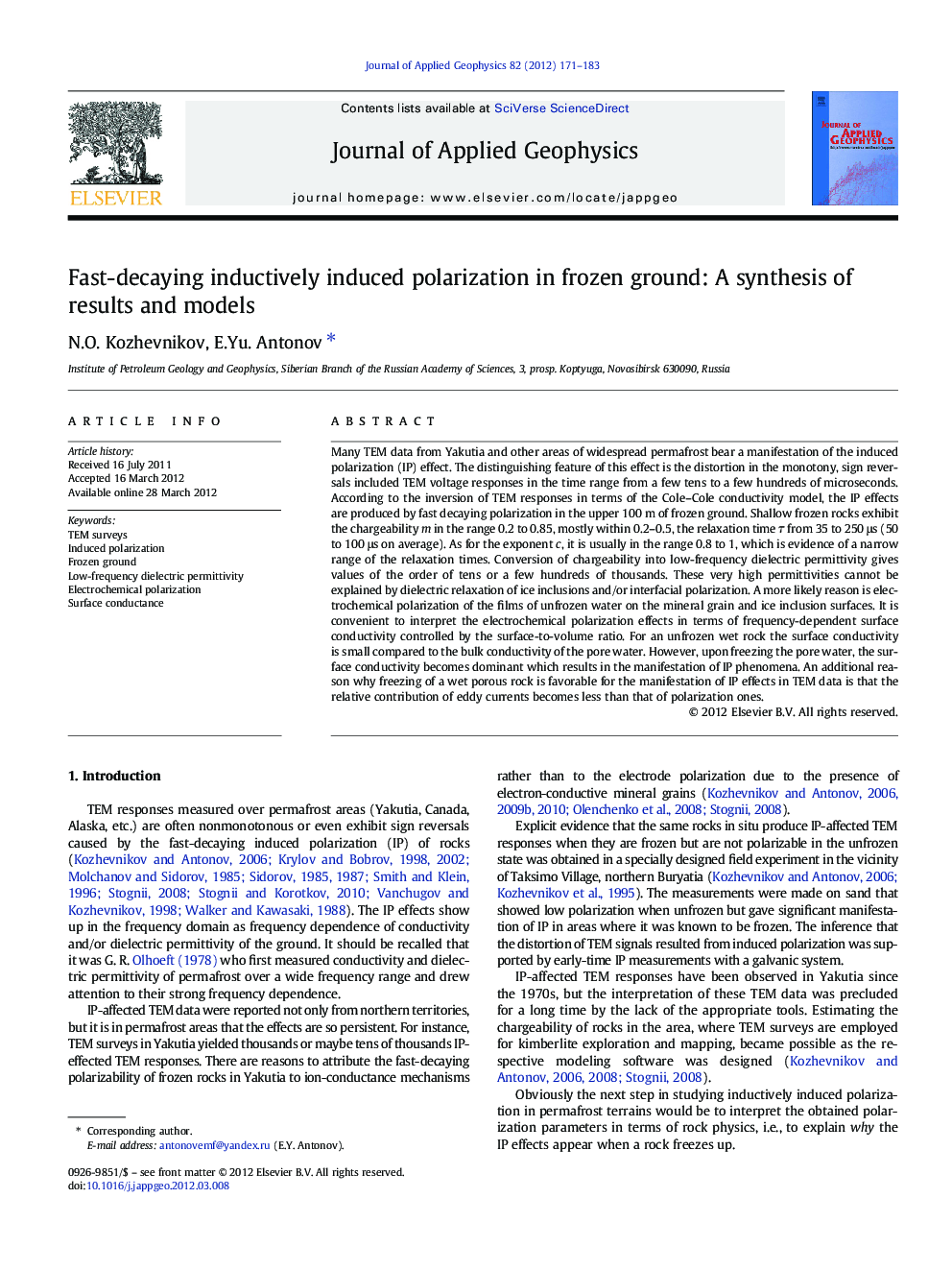| Article ID | Journal | Published Year | Pages | File Type |
|---|---|---|---|---|
| 4740556 | Journal of Applied Geophysics | 2012 | 13 Pages |
Many TEM data from Yakutia and other areas of widespread permafrost bear a manifestation of the induced polarization (IP) effect. The distinguishing feature of this effect is the distortion in the monotony, sign reversals included TEM voltage responses in the time range from a few tens to a few hundreds of microseconds. According to the inversion of TEM responses in terms of the Cole–Cole conductivity model, the IP effects are produced by fast decaying polarization in the upper 100 m of frozen ground. Shallow frozen rocks exhibit the chargeability m in the range 0.2 to 0.85, mostly within 0.2–0.5, the relaxation time τ from 35 to 250 μs (50 to 100 μs on average). As for the exponent c, it is usually in the range 0.8 to 1, which is evidence of a narrow range of the relaxation times. Conversion of chargeability into low-frequency dielectric permittivity gives values of the order of tens or a few hundreds of thousands. These very high permittivities cannot be explained by dielectric relaxation of ice inclusions and/or interfacial polarization. A more likely reason is electrochemical polarization of the films of unfrozen water on the mineral grain and ice inclusion surfaces. It is convenient to interpret the electrochemical polarization effects in terms of frequency-dependent surface conductivity controlled by the surface-to-volume ratio. For an unfrozen wet rock the surface conductivity is small compared to the bulk conductivity of the pore water. However, upon freezing the pore water, the surface conductivity becomes dominant which results in the manifestation of IP phenomena. An additional reason why freezing of a wet porous rock is favorable for the manifestation of IP effects in TEM data is that the relative contribution of eddy currents becomes less than that of polarization ones.
► TEM data in cold regions indicate strong IP effects. ► Inversion of TEM responses from Yakutiya in terms of the Cole–Cole conductivity model. ► Dielectric relaxation in ice and Maxwell–Wagner polarization in frozen ground. ► Electrochemical polarization and surface conductance in frozen ground.
